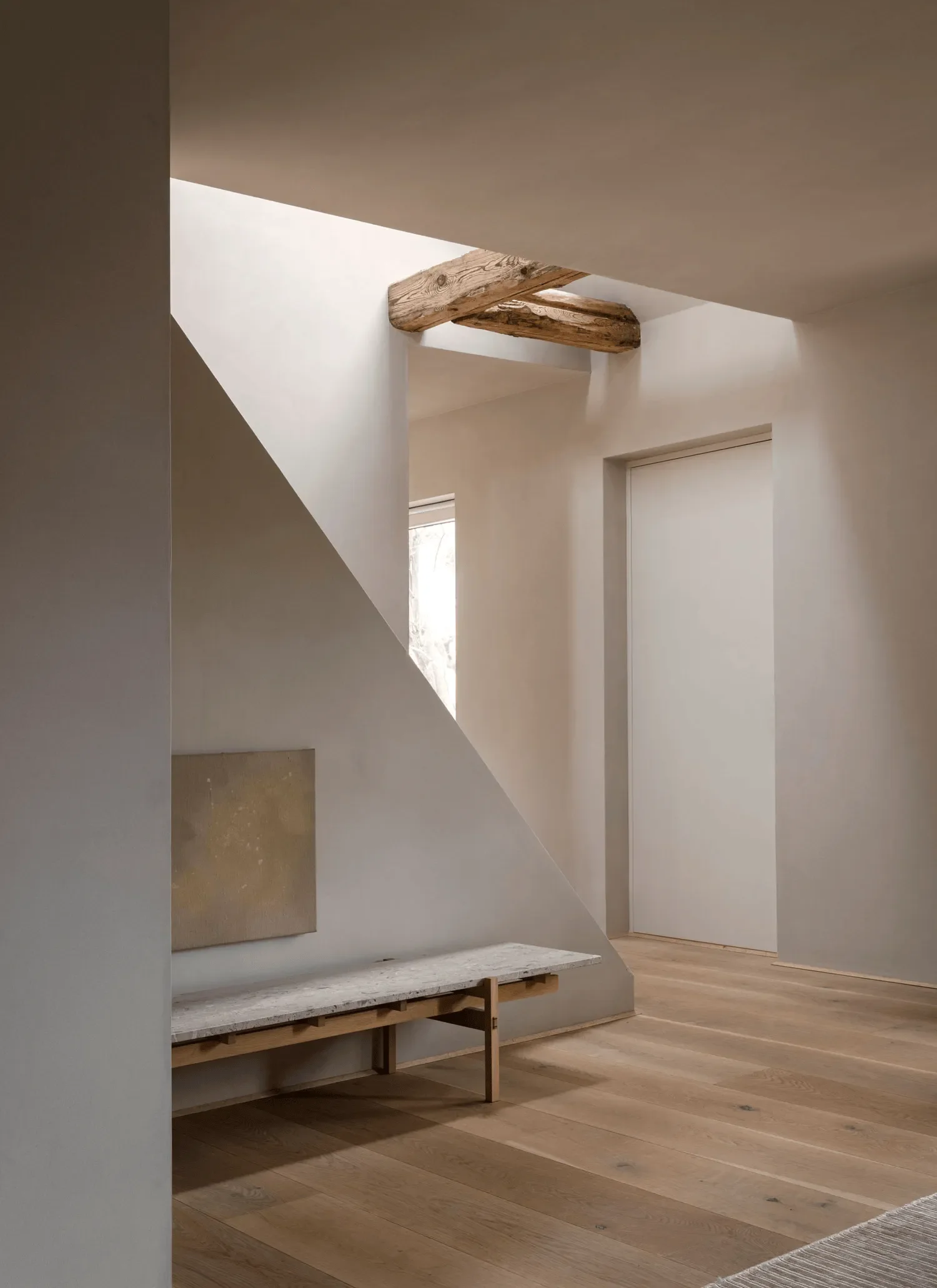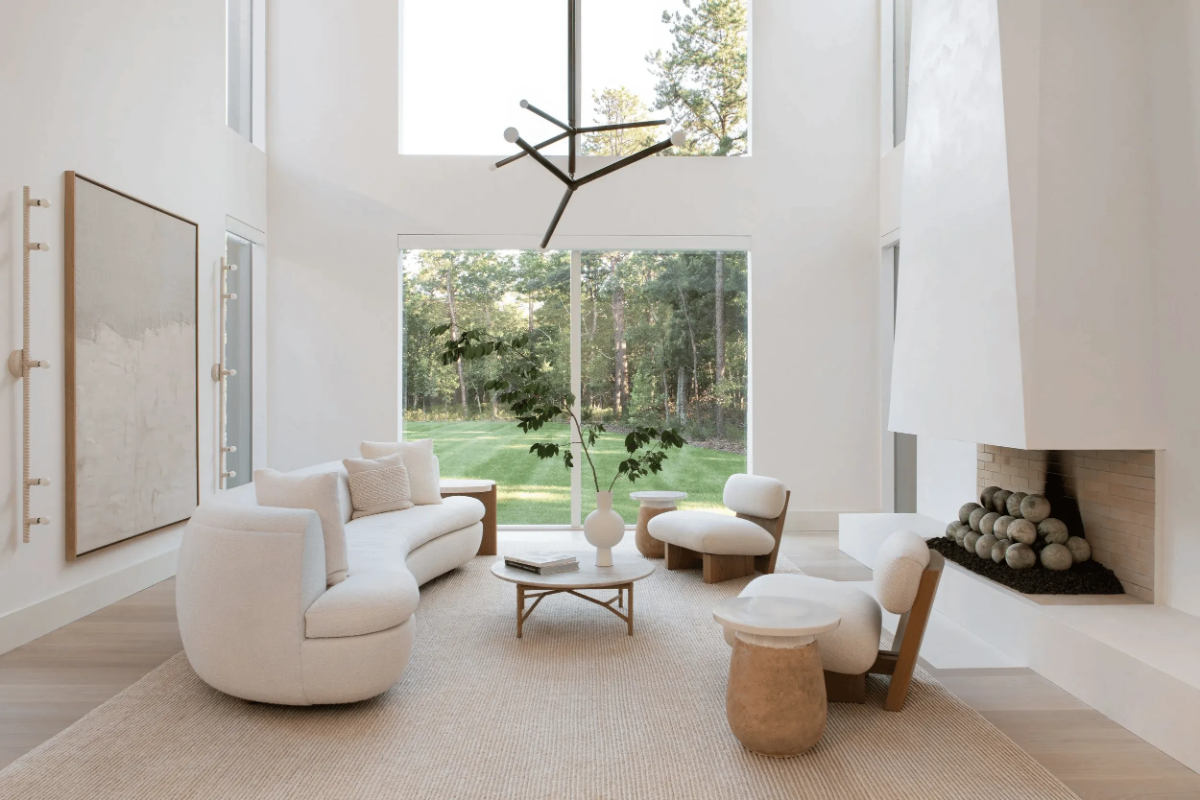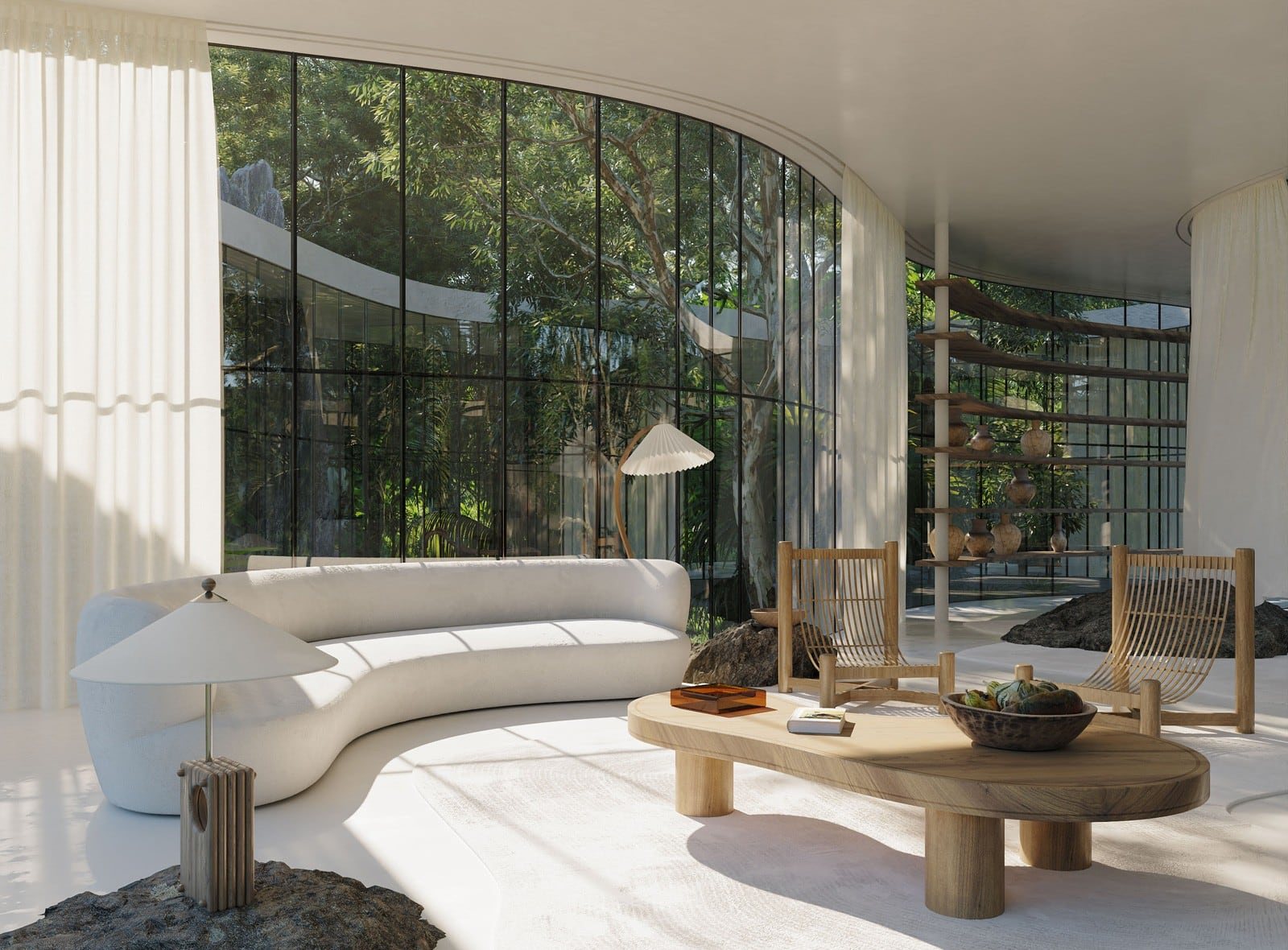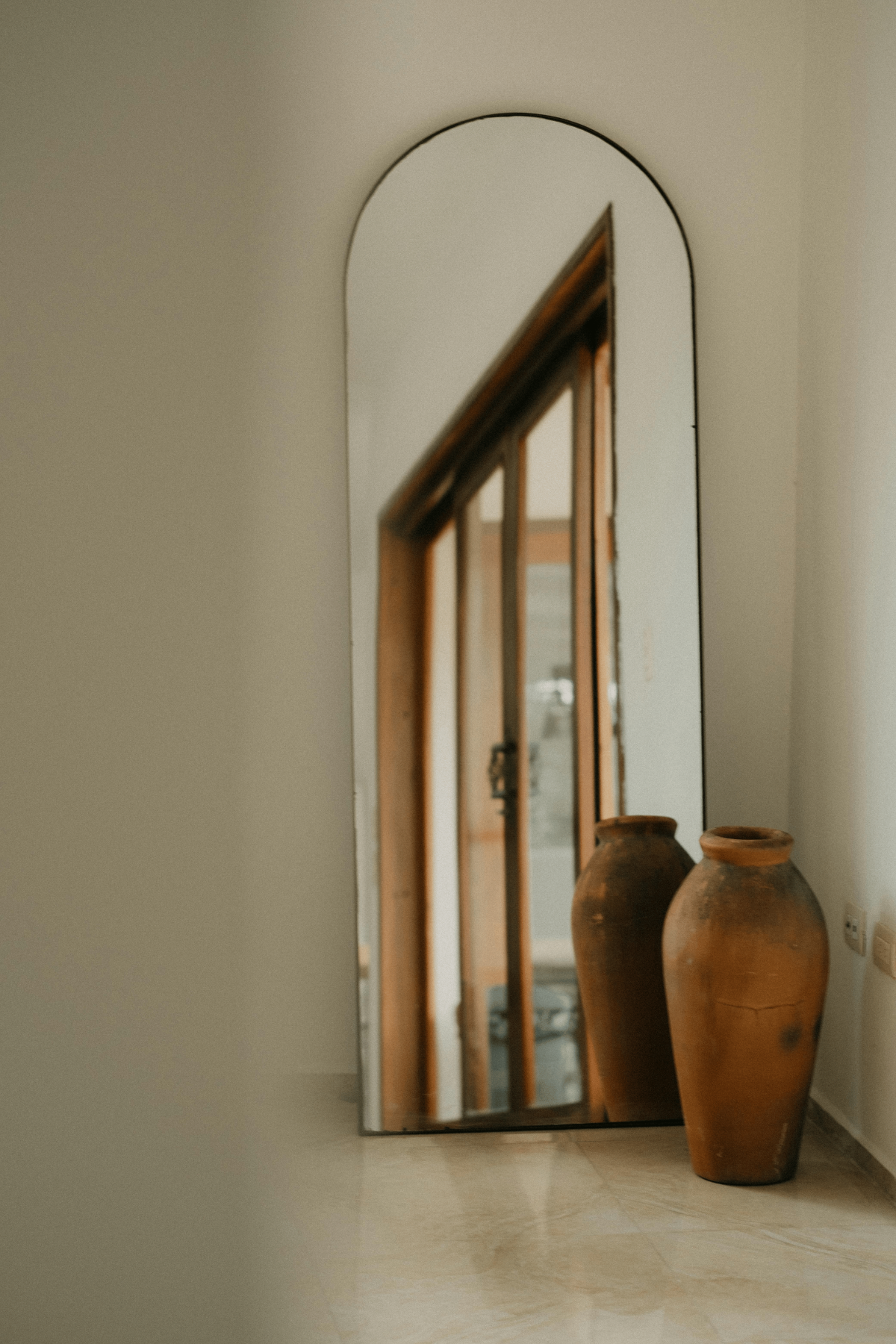Serene Spaces: Minimalism in Interior Design for Calm Living
Last update October 31, 2025
Minimalism in interior design pares rooms back to their essentials, using natural light, clean lines and sustainable materials to craft calm, functional spaces that breathe with intention.
Anchored in focus, simplicity, and sustainability, minimalist interiors strip away distractions so that essentials, light, proportion, and tactile materials can take center stage. Before shifting a coffee table or hanging art, ask what atmosphere you truly need: a serene refuge that calms post-screen fatigue, or a purpose-driven studio holding only the tools that spark creation. This guide demonstrates how designers blend Scandinavian warmth, Japanese clarity, and modern architectural discipline into spaces where clean lines meet layered textures. By the end, you’ll know how to curate furniture, finishes, and accents with intent, retire the superfluous, and uphold sustainable principles without sacrificing depth or welcome.
What You'll Discover
Affiliate Disclosure
Some links in this post are affiliate links. That means we may earn a small commission, at no additional cost to you, if you choose to make a purchase. These are always brands, stays, or experiences we would recommend to a dear friend. Thank you for supporting the quiet sustainability of Terra Selene.
Principles of Minimalism in Interior Design
Minimalist interior design begins with principles that prioritise functionality, clarity, and balance. Interior designers first map the interiors, highlight circulation paths, and remove clutter so the open floor plan supports focus in daily rituals. Only the essentials remain: a solid wood dining table, a linen wallpaper accent, and perhaps one ceramic vessel that adds visual interest without excess decoration. Clean lines run from the skirting board to the ceiling, turning architecture into a quiet grid. These elements work together to create a minimalist-designed space where light, air, and a sense of proportion share equal billing.
The concept insists that furniture carries more than aesthetic value; it must serve a specific purpose and encourage minimalism by reducing excess. Less is more, resulting in fewer distractions, stronger functionality, and a welcoming feel rooted in honest materials. Scandinavian minimalism shows that beautiful materials like oak, wool, and stone breathe warmth into neutral colors, proving that minimalism never equals sterility. Following these principles results in a calming effect that spreads through the wider lifestyle: you spend less time cleaning, you gain more space to move, and your mind mirrors the clarity of the interiors you inhabit. Ultimately, principles guide you to create a minimalist space that reads modern, timeless, and human.
Minimalist Philosophy and Visual Language
At its heart, minimalism is intentional reduction rather than denial. The minimalist design aesthetic embraces simplicity as the route to deeper appreciation. When interior designers select fewer pieces of furniture, they insist on quality joinery, sustainable interior design certifications, and timeless style. Minimalist architecture complements this philosophy with flat roofs, simple shapes, and large expanses of glass that invite daylight to travel across interiors all day. Inside, neutral colors such as chalk, sand, and charcoal create a monochromatic palette that soothes the eye, while a single moss cushion or rust bowl introduces different shades that add visual interest.
The visual language depends on repetition: parallel timber battens, aligned grout lines, and repeating shadows. Such elements provide rhythm without clutter. Art is curated, never scattered. A gallery of three works spaced deliberately on white surfaces allows focus to rest on each piece and frames the surrounding interiors as part of the composition. This careful framing demonstrates the minimalist idea that space itself is a material equal to wood or stone. By limiting decoration to bare essentials, your minimalist interior design style makes room for light, shadow, and texture to perform. Minimalism, therefore, speaks through silence, proving that only things that serve the mind and body should stay.
Core Elements: Natural Light, Clean Lines and Natural Materials
A successful minimalist space rests on three pillars: abundant daylight, disciplined lines, and tactile natural finishes that supply warmth and simplicity. Begin by amplifying illumination, swap heavy drapes for linen sheers, enlarge window reveals, or add a clerestory band to pull the sun deeper into the plan. This radiance heightens the grain of lime plaster, terrazzo, and broad oak planks, so select surfaces that welcome rather than repel it.
Geometry follows: cabinet fronts sit flush, sofa arms meet seats at crisp right angles, and simple silhouettes echo along balustrades, guiding the eye with intention. Organic texture then softens the precision; timber beams, reclaimed stone tiles, and cotton throws deliver warmth through tonal variation and tactile richness. Together, they transform what could feel austere into an inviting ambience that supports minimalist living without severity.
Neutral palettes avoid monotony through layered craft, while a monochrome base preserves serenity. Scandinavian tradition shows how candles, wool, and wood foster cosiness, introducing subtle depth while honouring deliberate restraint. Complement the composition with a single clay vessel, linen wall covering, or carefully chosen coffee-table book, ensuring each space retains generous breathing room. Attend to these elements, and your home will radiate calm while remaining rich in detail.
Designing Functional, Refined Interiors
Functionality is the decisive measure of minimalist interior design. Before purchasing accessories, map out how you live. Track where you place shoes, charge devices, and prepare meals. Then create storage so these rhythms remain smooth and silent. A wall-hung credenza captures keys, while tall wardrobes free the dining interiors from overflow. Invest in modular furniture that adapts over the years; this strategy supports sustainable interior design and reduces waste. Choose instead a slim, wall-mounted console with push-to-open drawers that tucks everyday essentials out of sight while keeping sightlines clear and the floor visually light. Remember that minimalism prefers an open floor plan that supports a minimalist design where movement flows without obstruction; the concept values breathing room as much as furniture.
When arranging a minimalist-designed space, keep neutral colors dominant, then highlight points of focus with a single art piece or a pendant in sculptural wood. Resist filling corners just to fill them. The calming effect of uncluttered space emerges when surfaces stay clear and functional, and objects can be appreciated individually. This deliberate editing fosters focus, invites mindfulness, and encourages a lifestyle grounded in simplicity and quality. Curate lighting too; a trio of dimmable wall sconces offers different shades of light for reading, resting, or sharing meals, reinforcing the idea that each element must earn its place.
Global Influences: Japanese and Scandinavian Minimalism
The Scandinavian branch of the minimalist interior design style matured in the early twentieth-century functionalism of Alvar Aalto and Arne Jacobsen, then softened through cultural ideas such as lagom (just enough) and hygge (everyday cosiness). Long winters prompted designers to maximise pale surfaces that reflect the scarce northern glow, yet balance that brightness with warmth: wide pine floors, wool throws, and mouth-blown glass that scatters a gentle shimmer. Furniture is honest: solid timber, visible joinery, no superfluous ornament, so each room feels durable, calm, and welcoming even in harsh weather.
In Japan, the concept of ma, the pause that lets objects breathe, anchors a minimalist interior design style steeped in Zen and wabi-sabi appreciation for imperfect beauty. Tatami mats establish rhythm underfoot, sliding shoji panels filter daylight into a gentle haze, and simple shapes in cedar joinery guide mindful movement from room to room. Long before minimalism became a contemporary global trend, Japanese architects pioneered minimalist architecture with exposed timber frameworks and open sightlines, dissolving the boundary between inside and garden and fostering a deeper sense of presence.
Both traditions value restraint, natural materials, and meticulous craft; they simply express those values through different climates and philosophies. Contemporary designers often weave the two together, pale oak and linen from the Nordic palette meet paper lanterns and river-stone basins from Japan, to create interiors that feel at once grounded and elevated. The resulting spaces offer a clear sense of order without sterility, demonstrating how cultural specificity can enrich, rather than complicate, the global language of minimalist design.
Sustainable Minimalist Design: A Practical Framework
Minimalist interior design and sustainability share the same DNA: do less, but do it better. By limiting purchases to durable pieces made from responsibly sourced natural materials, you cut embodied carbon while elevating quality. Begin with a materials audit: favor reclaimed timber, recycled-glass terrazzo, or FSC-certified oak over newly milled tropical hardwoods. Select wool, linen, or hemp textiles stitched with cotton thread, fibres that can decompose or be recycled rather than lingering in landfill. Furniture built with modular, repairable parts extends life span; a sofa with replaceable covers and bolt-on legs outlasts a glued particleboard frame tenfold.
Next, design for a circular life cycle. Specify finishes rated Cradle-to-Cradle or use plant-oil sealers and mineral pigments that develop a graceful patina instead of flaking into micro-waste. Choose single-material elements (all-aluminium chairs, solid-oak stools) so future recycling is straightforward. Source locally whenever possible to shrink transport emissions and support regional craft traditions.
Operational efficiency finishes the loop. Passive strategies, high clerestory windows for stack ventilation, deep eaves that shade summer sun, cross-breeze corridors in an open floor plan, reduce dependence on mechanical cooling. Pair daylight harvesting with dimmable LEDs; both slash energy use while preserving the serene, neutral colour palette that defines minimalist design.
When you unite intentional restraint with resource wisdom, every room becomes a quiet advocate for the planet. The result is a refined interior that feels lighter on the eye, softer underfoot, and gentler on ecosystems, a living demonstration that sustainability is not an afterthought but the beating heart of mindful minimalism.
Living Lightly: Final Reflections
Minimalism encourages you to create interiors that nurture focus, creativity, and calm. When you strip interiors to the bare essentials, you amplify every remaining element. A single piece of art hung on linen wallpaper becomes a meditation rather than background noise. Neutral colors absorb changing light, different shades shifting slowly from dawn blush to dusk amber, turning time into subtle theatre. Clean lines keep sightlines clear so you can think, cook, or stretch without bumping into clutter. Place furniture with intention, respect the minimalist space, and select accessories sparingly. Over months, you will notice the calming effect grow as fewer items mean fewer chores, less dust, and more mental space.
The minimalist lifestyle is not about deprivation; it is about connection to what truly matters. Let Scandinavian minimalism remind you to balance beauty with use. Let Japanese principles remind you that space is an essential partner. In a world saturated with digital noise, a minimalist interior design style becomes a powerful refuge, a functional space that restores energy instead of draining it. Begin today by clearing one shelf, letting natural light wash the surface, and feeling the promise of living lightly expand across your home. And when you’re ready to extend this clarity into daily rituals, explore how to design an effortless everyday workspace that simplifies your kitchen and restores flow to the heart of your home.











